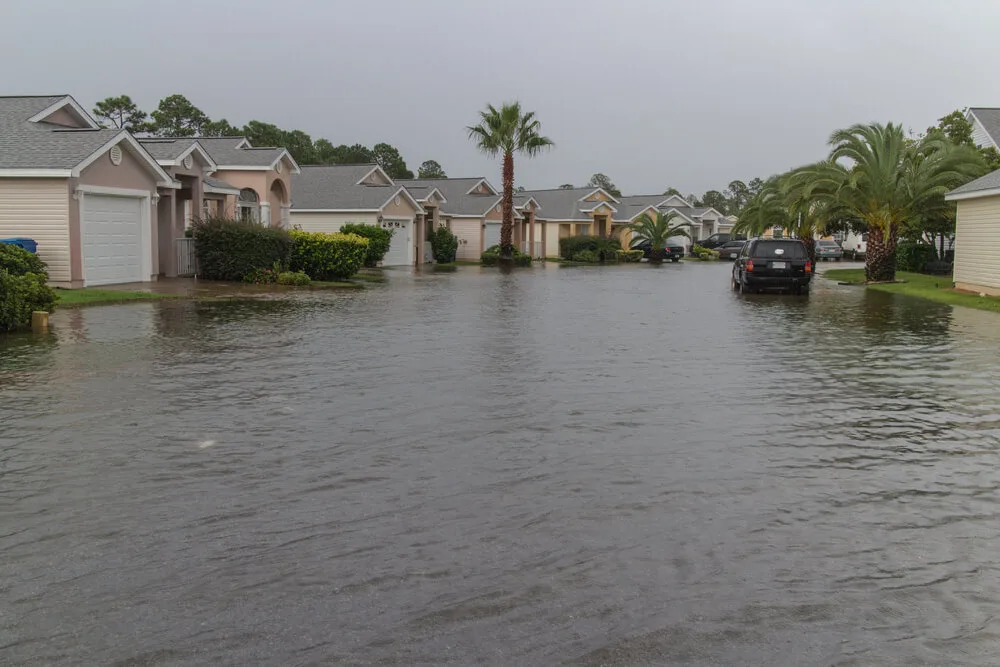
Image via Shutterstock.
The catastrophic damage left by Hurricane Ian exposed the problem of thousands of homes without flood insurance and buildings built under lax construction standards.
Only four Category 5 hurricanes have made landfall in the US since 1900. Ian was about to become the fifth one on Wednesday when it entered the coast of Lee County.
Ian forged a path of destruction through west and central Florida including Osceola, with 155 mph winds—Category 5 starts at 157 mph. That part of Florida has been one of fastest-growing areas in the nation for the past decade. In fact, Florida has become one of the most moved-to states of the pandemic, especially Lee, Hillsborough, and Osceola counties, according to the Census Bureau data.
RELATED: ‘I’m Committed to You’: Biden Will Visit Florida and Puerto Rico as Soon as ‘Conditions Allow’
In Lee County, the population has more than doubled since 1990 to nearly 800,000 residents. Fort Myers, North Port, and Port St. Lucie are among the 15 fastest-growing cities or towns in the US since 2020.
Ian, which is one of the strongest storms ever to hit the US, flooded homes on both the state’s coasts, cut off the only road access to a barrier island, destroyed a historic waterfront pier in Naples, and knocked out electricity to 2.67 million Florida homes and businesses.
The catastrophic damage left by Ian in Florida has exposed the problem of thousands of homes without flood insurance and buildings built under lax construction standards.
Even though Florida is the nation’s most hurricane-prone state, it has to deal with a failing property insurance market.
Normally, flood insurance is sold separately from standard homeowners’ policies, and only a small number of people buy that coverage.
According to the Federal Emergency Management Agency (FEMA), Florida has one of the highest rates of flood coverage in the nation, but the policies are concentrated in flood-prone coastal regions such as the Miami area.
But Ian’s path went through areas where flood insurance is not mandatory. For example, Orlando got 14.37 inches of rain.
According to a Fitch Ratings analysis released on Thursday, the estimated insured cost losses could be from $25 billion to $40 billion in the state.
Affordability is an issue that has hit Floridians hard in the past year. The housing crisis, in which rents have risen by 30% in some areas, has been one of the main problems, as has property insurance.
Already, lawmakers and experts are saying that Ian could affect private homeowner insurers unless the state Legislature steps in.
Building and home development in Florida is another problem area exposed by Ian.
RELATED: People Trapped, 2.5M without Power as Ian Drenches Florida
Florida has some of the nation’s strongest statewide building codes, which were adopted after Hurricane Andrew destroyed the southwest region in 1992.
However, the new codes didn’t take effect until 2001 and apply only to structures that were built or substantially repaired since then.
For that reason, experts have warned that the level of damage will depend greatly on the year the home was built.
Politics
Local News







